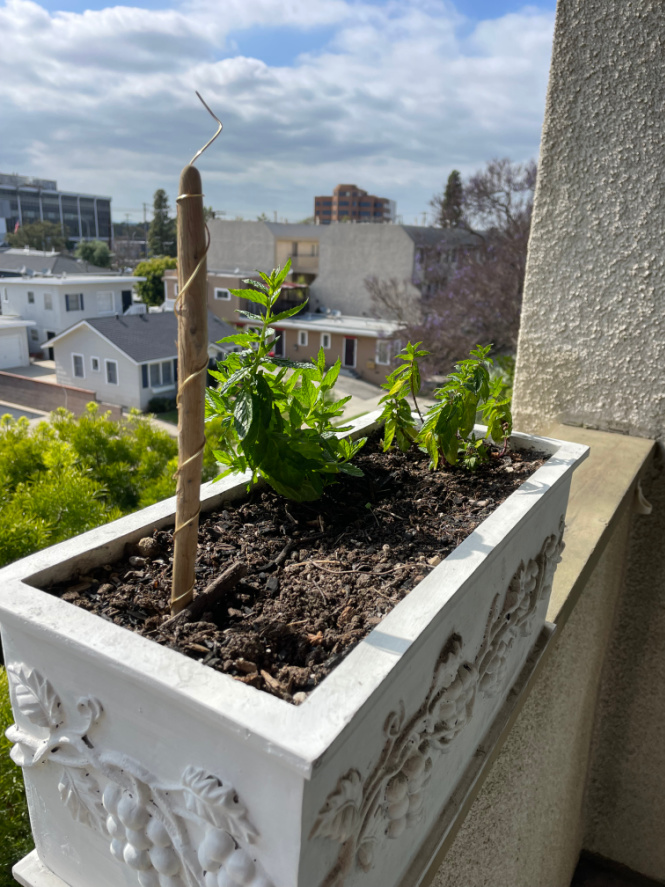Hello Dear Ones,
A few months ago, I was going over some information through David “Avocado” Wolfe, a well-known health advocate, and came across a fascinating image: several pieces of wood coiled with copper wire. They were mysteriously beautiful to me. In this image, he casually mentioned he was making his antennas for electroculture gardening.
Within the next second…tap, tap, tap…I found several links online that discussed electroculture gardening and how it worked. One person in particular captivated me with his wealth of information on this topic: Matt Roeske. He went into depth about how these copper coiled antennas used the earth’s natural electromagnetic field and amplified plants’ ability to grow. It also minimized pests, allowed the plant to use less water, and re-energized the soil in a way where manure and typical plant food weren’t necessary.
As this information filtered through my discernment scale, I remembered wearing copper bracelets in the past to help my wrists. The copper was to increase circulation in the body and reduce arthritis. If it worked for humans, why wouldn’t it work for plants too?
I scanned books, authors, and other videos from various electroculture experts. I was flabbergasted and my mouth dropped in awe. It’s been around for centuries…so why haven’t I heard of it before? Why do we not see these in every garden, farm, or agricultural field?
That I leave for your imagination…
My excitement tickled my insides as I knew this adventure would lead me to a trip to the hardware store…and possibly a craft store. Sure enough, both my bases were covered. I got some wooden sticks and copper wires with a range of gauges just in case. I also found some old chopsticks at home that I added to my electroculture lab. I was ready to create and put them to the test.
There was an indoor plant of ours at home, Veridita, who looked sad and droopy for the last month or so. After my partner inserted an antenna in her pot, it took about half a day until we noticed a change. Veridita’s stems perked up with surprising strength. The droopiness was no longer and she ‘felt’ happier to me…yes, plants ‘feel’ too.


Another day, we inserted an antenna in a flower pot of mint we keep on our balcony. Nothing was immediately noticeable, but as the weeks progressed further, the sturdiness of the mint increased and little sprout clusters of mint popped up through the dirt. Typically, we have very bad luck with herbs for some reason, so for us, this is huge.

On May 15th, I surprised my love with a bouquet. A week and a half later, it looked like this vased bunch was already turning, despite the many buds that had yet to bloom. For curiosity’s sake, I put an antenna in the vase’s water within the flowers. As you can see in the images, the progression of blooming buds was a surprise. We’re now at two weeks and 4 days since I purchased them and I think they’ll hold on for one more day.

According to the World Economic Forum, China already has 8,895 acres of “electrified” glasshouses to increase their food production. Though I’m not here to convince you that this method really works, what I do ask of you, is to try it for yourself. Give it a chance and see where it leads.
Are you ready to get your hands dirty?
Here’s what you need to make your own electroculture antennas:
1. Wood (ex. driftwood, stick from the park, bamboo, chopstick)
2. Copper wire (thicker gauges like 14 and 16 work well with larger pieces of wood)
3. Wire cutter and/or wire tools
4. Crystals or stones (Optional…depending how decorative you want to get)
Directions: Make a little loop/spiral at the end of the wire and slowly twist the stick as you follow the copper wire up the side.
If you live in the northern hemisphere, spiral the wire clockwise up from the base of the stick. If you live in the southern hemisphere, spiral the wire counter-clockwise up from the base of the stick. The easiest way to decipher the direction is to look at the end of the stick closest to you and imagine the face of a clock there. The ones below are for the northern hemisphere.




Once you get to the top of the stick, cut your wire 1/2 inch – 1 inch above the top. Coil the excess into a spire, pointed up. Voila! You have made your first electroculture antenna!
According to Matt Roeske, a six-foot electroculture antenna should cover about 225 square feet in the yard. If you use this measurement as a base, you can adapt and experiment with different sizes according to the plants or garden you want to assist.
A Copper Collaboration,
Lesley
References & more information:
“Electroculture for Beginners: 2 Books in 1–Unlock the Secret Power of Electricity to Maximize your Agriculture, Have a Faster Plant Growth, and Improve Your Crop Health,” by Errol Ramos
https://thegardenstrust.blog/2021/09/04/electroculture/
https://www.weforum.org/agenda/2018/10/china-has-made-a-shocking-food-production-discovery-electro-culture/
Interview with David ‘Avocado’ Wolfe & Matt Roeske: https://www.youtube.com/watch?v=u-VEGKqgp1E

You must be logged in to post a comment.